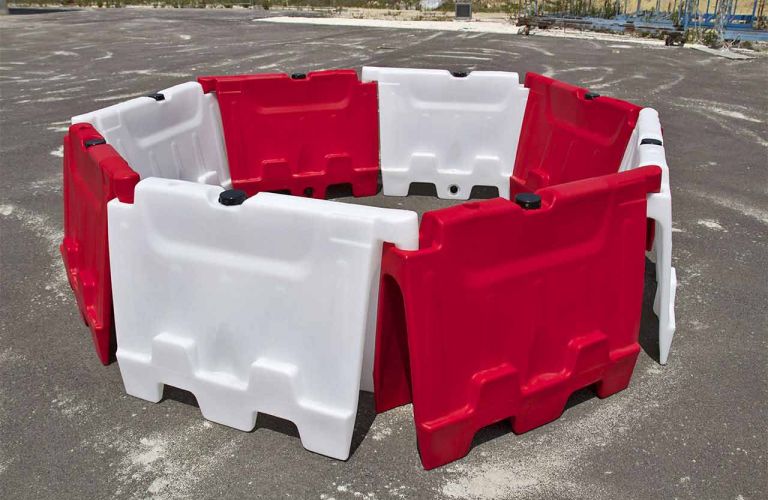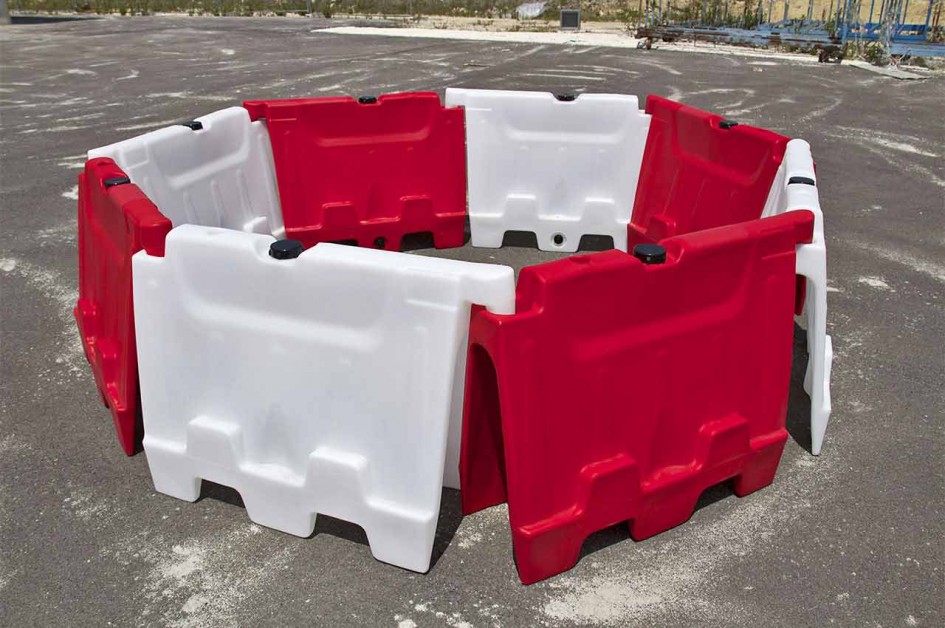Worksite fencing: the advantages of the New Jersey plastic barriers
12 June 2020
New Jersey plastic barrier consist of modules with a hollow structure. In order to gain appropriate weight and stability to the operational and environmental characteristics of the worksite they're installed whitin, they can be filled with water or sand.
The Italian reference norm on worksite fencing
Worksite fencing is the system used by the company to signal and delimit the area within which the following are carried out:
- dismantling, maintenance, restoration and construction operations
- materials and work tools storage
- vehicles, workers and other authorized personnel transit
Moreover, fencing prevents or regulates access to worksite to unauthorized people for safety or security reasons.
In Italy is ruled by legislative decree 81/2008 that states that the company must provide a clearly visible and identifiable access and fencing of the worksite, and to keep them in perfect efficiency for the entire duration of the works.
Most common types of fencing
Depending on the types of worksite, the most common fencing in construction are the orange polyethylene mesh, the corrugated sheet or wood panels blind fencing, the self-supporting panels of galvanised metal grid.
In other cases, e.g. to delimit a road construction site, the mostly adopted solution are the so called New Jersey barriers. They consist of concrete elements that, as well as defining the working area, prevent potential impact as they avoid any rail crossing ad redirect the vehicle in case of heeling.
New Jersey barriers were used for the first time in mid '50 in USA, in the state of New Jersey, after which they were named. They were adopted on Italian highways since 1983, and they revealed soon a general improvement of road safety, reducing the number of accidents and the damages to vehicles and persons in case of crashes.
The advantages of a plastic New Jersey fencing
New Jersey plastic barrier consist of modules with a hollow structure. In order to gain appropriate weight and stability to the operational and environmental characteristics of the worksite they're installed whitin, they can be filled with water or sand.
They can be from 24 to 30 inches tall, and their use leads to some advantages that make them the best choice to solve viability problems or to delimit manoeuvring area in large parkings.
Versatility
New Jersey plastic barriers can be placed on most of pavements: soil, pavement, asphalt. Some models can be put across a curb: that's why, as well as a fencing, they can be used as a divider.
Ease of use
Thanks to their stackability, New Jersey barriers require very little space for storage. Moreover, as they're made of plastic, they're very lightweighting and therefore easily transportable. Their bottom can be provided for handling by standard forklift
Wide range of accessories
New Jersey plastic barriers come with a splicing system to easily join various elements. As well as water and sand filling and draining plugs, they have housings and holes for sign pipes, reflective gems, emergency lights. Moreover they allow to apply one or more plates for company's customized stickers.
Cost-effectiveness
New Jersey plastic barriers are made of high quality polyethylene, through modern and efficient industrial production process, that make them a rather cheap product. Moreover, despite their low price, they are shockproof, low-wear and weather resistant.
The best choice
Their dimensions and shapes, especially in the turns, guarantee a better visibility than other systems ike steel safety guardrail or wooden fencing. Available in the colours red, white, yellow or black, they're the best choice for temporary or moving worksites and to delimit any area, parking or racing tracks.


